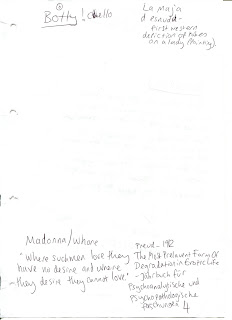Wednesday, 20 March 2013
Sunday, 17 March 2013
Babar
Babar is about an elephant who, after his mother is
killed by a hunter, leaves the jungle and enters the city, where he learns
about civilisation. He returns to the jungle, wiser, and becomes the king of
the elephant kingdom. This book has been heavily criticised for attempting to
justify colonialism. The writer Adam Gopnik, in his article Freeing the
Elephants, thinks that the book is more about the lure of organised
civilisation, and the safety and easiness of it, is something that elephants
can feel too – “"while it is a very good thing to be an elephant, still,
the life of an elephant is dangerous, wild, and painful. It is therefore a
safer thing to be an elephant in a house near a park.""
Little Black Sambo
A children’s book first published in 1899, which
has been revised many times as black people have gained more equality over the
course of the 20th century. Sambo is an indian boy who meets some tigers while
he’s on a walk, and gives them his clothes in exchange for them not eating him.
The tigers argue over their new clothes, and melt into butter. The caricature
of a black child was hurtful to black children who read it, and as early as
1932 it stopped being recommended to school children. The book has been remade
and rebranded by many writers and illustrators, who have changed it to names
such as “little kim”, “the boy and the tigers” and “chibikuro sampo” (a
Japanese version, which translates to little black sambo).
Matilda
The distinctive illustrative style of Quentin
Blake shows the story of a little girl who is neglected by her vile parents,
and develops telekinetic psychic powers. Quentin Blake said in an interview
that his informal style makes his works more approachable, encouraging children
to engage with the books. The illustrations of her sitting by piles of books,
smiling, particularly speaks to shy, bookish children, who feel that books are
their only friends, and lets them know that it’s okay to be like that. Matilda
is a brilliant example of a female main character in a book aimed at both girls
and boys, something that is surprisingly rare in child-oriented media.
Paintings of Venus
Venus is the roman goddess of love, sexuality and
fertility, being the human embodiment of these things.
She has been painted a lot and here I have
looked at two paintings of her, by Titian and Manet. This is Venus of Urbino, a
painting by Titian from the 1500s.
She is inside, a change from her usual
depictions (she was born from sea foam so she is often in the sea), and she is
looking directly at the viewer, engaging with them. As well as this, the
painting is erotic, her body language being inviting and relaxed. However, the
dog in the background is a symbol of fidelity, and her hand is delicately
hiding her vulva as her servants search for clothes in the background.
In the Manet painting, which is inspired by Venus of Urbino,
she is depicted as a French prostitute, wearing high heeled shoes, an orchid in
her hair, a bracelet, pearl earrings, and other things. This also has some
marked differences in that the animal depicted is a cat, another indicator of
prostitution, and her hand is firmly placed over her vulva, as she looks away
from a bouquet of flowers, likely a gift from a client. This painting is also
very sloppy and lacks midtones, which was shocking at the time, as it depicts a
harsh and sickly goddess, rather than a beautiful fantasy.
Subscribe to:
Comments (Atom)
















